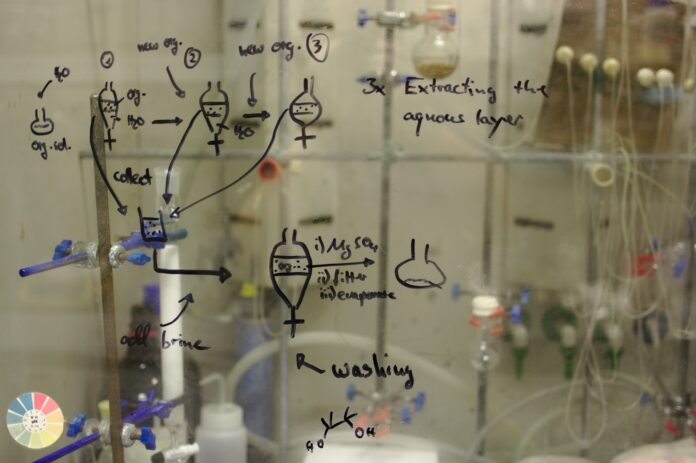Functional groups are essential components in organic chemistry that play a fundamental role in determining the chemical and physical properties of organic compounds. They are specific arrangements of atoms or groups of atoms within a molecule that exhibit characteristic chemical behavior. Functional groups are crucial for the identification, classification, and understanding of organic compounds. This comprehensive description will delve into the intricacies of functional groups, their classification, common examples, and their significance in organic chemistry.
A functional group can be defined as a reactive group of atoms within a molecule that imparts particular chemical properties to the compound. These groups participate in chemical reactions, influencing the behavior and reactivity of the molecule as a whole. Functional groups are often responsible for the specific functional properties exhibited by organic compounds, such as acidity, basicity, solubility, and reactivity towards certain reagents.
Functional groups are classified based on the atoms present and their arrangement within the molecule. They can consist of atoms such as carbon, hydrogen, oxygen, nitrogen, sulfur, and halogens (fluorine, chlorine, bromine, iodine). The arrangement and connectivity of these atoms determine the functional group’s unique properties. Some common functional groups include hydroxyl (-OH), carbonyl (C=O), carboxyl (-COOH), amino (-NH2), and alkyl (-CH3). These groups are present in numerous organic compounds and contribute to their diverse range of physical and chemical properties.
The hydroxyl functional group (-OH) is one of the most prevalent and important functional groups. It is found in alcohols, phenols, and carboxylic acids, among other compounds. The presence of the hydroxyl group in a molecule imparts polarity to the compound, allowing it to form hydrogen bonds with other polar molecules. This characteristic makes hydroxyl-containing compounds highly soluble in water. Additionally, the hydroxyl group can act as a weak acid, capable of donating a proton in certain chemical reactions.
The carbonyl functional group (C=O) is another prominent functional group that appears in various organic compounds, such as aldehydes, ketones, carboxylic acids, esters, and amides. The carbonyl group consists of a carbon atom bonded to an oxygen atom through a double bond. This arrangement leads to the polarization of the C=O bond, making the carbon atom partially positive and the oxygen atom partially negative. The polarity of the carbonyl group influences the reactivity and properties of compounds containing this functional group. For example, aldehydes and ketones exhibit distinctive chemical behavior due to the presence of the carbonyl group.
The carboxyl functional group (-COOH) is an essential functional group found in carboxylic acids. It consists of a carbonyl group bonded to a hydroxyl group. The carboxyl group imparts acidity to carboxylic acids, as it can easily donate a proton (H+) in aqueous solutions. This donation of a proton makes carboxylic acids weak acids. The carboxyl group also plays a crucial role in the reactivity of carboxylic acids, enabling them to undergo various chemical transformations.
The amino functional group (-NH2) is prevalent in amines and amino acids. It consists of a nitrogen atom bonded to two hydrogen atoms. Amines are organic compounds derived from ammonia (NH3) by replacing one or more hydrogen atoms with alkyl or aryl groups. The presence of the amino group imparts basicity to amines, as it can accept a proton (H+) to form a positive ion. This characteristic makes amines capable of acting as weak bases.
The alkyl functional group (-CH3) is a hydrocarbon group consisting of three hydrogen atoms bonded to a carbon atom. Alkyl groups are often attached to other functional groups, serving as substituents in organic compounds. They can be found in a wide range of organic compounds, such as alkanes, alkenes, and alkynes. Alkyl groups contribute to the physical properties of organic compounds, including boiling points, melting points, and solubility.
Functional groups provide a systematic approach to classify and identify organic compounds based on their characteristic groups. By recognizing the presence of specific functional groups, chemists can predict the behavior and reactivity of compounds in various chemical reactions. Functional groups also enable chemists to design and synthesize new compounds with desired properties and functions. Additionally, functional groups serve as the basis for nomenclature systems, allowing compounds to be named and categorized systematically.
Functional groups are vital components of organic chemistry, with their unique arrangements of atoms influencing the chemical and physical properties of organic compounds. They play a pivotal role in determining the reactivity, solubility, acidity, and basicity of organic compounds. By understanding functional groups and their characteristics, chemists can unravel the behavior of organic compounds, predict their reactions, and synthesize new compounds. The study of functional groups is an integral part of organic chemistry and provides a framework for understanding the vast array of organic compounds found in nature and synthesized in the laboratory.
Functional groups are essential components in organic chemistry that play a fundamental role in determining the chemical and physical properties of organic compounds. They are specific arrangements of atoms or groups of atoms within a molecule that exhibit characteristic chemical behavior. Functional groups are crucial for the identification, classification, and understanding of organic compounds. This comprehensive description will delve into the intricacies of functional groups, their classification, common examples, and their significance in organic chemistry.
A functional group can be defined as a reactive group of atoms within a molecule that imparts particular chemical properties to the compound. These groups participate in chemical reactions, influencing the behavior and reactivity of the molecule as a whole. Functional groups are often responsible for the specific functional properties exhibited by organic compounds, such as acidity, basicity, solubility, and reactivity towards certain reagents.
Functional groups are classified based on the atoms present and their arrangement within the molecule. They can consist of atoms such as carbon, hydrogen, oxygen, nitrogen, sulfur, and halogens (fluorine, chlorine, bromine, iodine). The arrangement and connectivity of these atoms determine the functional group’s unique properties. Some common functional groups include hydroxyl (-OH), carbonyl (C=O), carboxyl (-COOH), amino (-NH2), and alkyl (-CH3). These groups are present in numerous organic compounds and contribute to their diverse range of physical and chemical properties.
The hydroxyl functional group (-OH) is one of the most prevalent and important functional groups. It is found in alcohols, phenols, and carboxylic acids, among other compounds. The presence of the hydroxyl group in a molecule imparts polarity to the compound, allowing it to form hydrogen bonds with other polar molecules. This characteristic makes hydroxyl-containing compounds highly soluble in water. Additionally, the hydroxyl group can act as a weak acid, capable of donating a proton in certain chemical reactions.
The carbonyl functional group (C=O) is another prominent functional group that appears in various organic compounds, such as aldehydes, ketones, carboxylic acids, esters, and amides. The carbonyl group consists of a carbon atom bonded to an oxygen atom through a double bond. This arrangement leads to the polarization of the C=O bond, making the carbon atom partially positive and the oxygen atom partially negative. The polarity of the carbonyl group influences the reactivity and properties of compounds containing this functional group. For example, aldehydes and ketones exhibit distinctive chemical behavior due to the presence of the carbonyl group.
The carboxyl functional group (-COOH) is an essential functional group found in carboxylic acids. It consists of a carbonyl group bonded to a hydroxyl group. The carboxyl group imparts acidity to carboxylic acids, as it can easily donate a proton (H+) in aqueous solutions. This donation of a proton makes carboxylic acids weak acids. The carboxyl group also plays a crucial role in the reactivity of carboxylic acids, enabling them to undergo various chemical transformations.
The amino functional group (-NH2) is prevalent in amines and amino acids. It consists of a nitrogen atom bonded to two hydrogen atoms. Amines are organic compounds derived from ammonia (NH3) by replacing one or more hydrogen atoms with alkyl or aryl groups. The presence of the amino group imparts basicity to amines, as it can accept a proton (H+) to form a positive ion. This characteristic makes amines capable of acting as weak bases.
The alkyl functional group (-CH3) is a hydrocarbon group consisting of three hydrogen atoms bonded to a carbon atom. Alkyl groups are often attached to other functional groups, serving as substituents in organic compounds. They can be found in a wide range of organic compounds, such as alkanes, alkenes, and alkynes. Alkyl groups contribute to the physical properties of organic compounds, including boiling points, melting points, and solubility.
Functional groups provide a systematic approach to classify and identify organic compounds based on their characteristic groups. By recognizing the presence of specific functional groups, chemists can predict the behavior and reactivity of compounds in various chemical reactions. Functional groups also enable chemists to design and synthesize new compounds with desired properties and functions. Additionally, functional groups serve as the basis for nomenclature systems, allowing compounds to be named and categorized systematically.
In conclusion, functional groups are vital components of organic chemistry, with their unique arrangements of atoms influencing the chemical and physical properties of organic compounds. They play a pivotal role in determining the reactivity, solubility, acidity, and basicity of organic compounds. By understanding functional groups and their characteristics, chemists can unravel the behavior of organic compounds, predict their reactions, and synthesize new compounds. The study of functional groups is an integral part of organic chemistry and provides a framework for understanding the vast array of organic compounds found in nature and synthesized in the laboratory.














